Hypotenuse Leg Theorem – Explanation & Examples
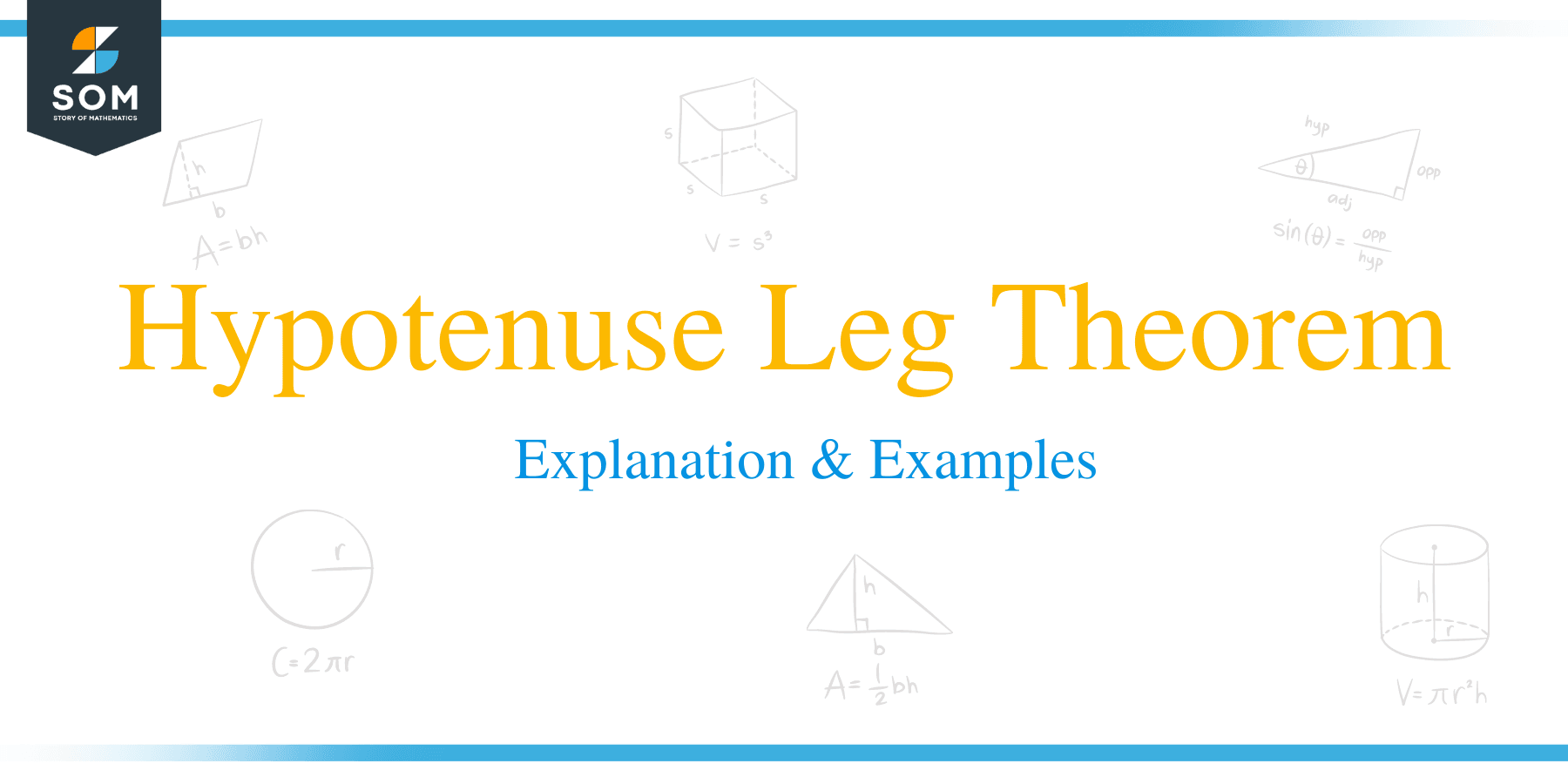 In this article, we’ll learn about the hypotenuse leg (HL) theorem. Like, SAS, SSS, ASA, and AAS, it is also one of the congruency postulates of a triangle.
In this article, we’ll learn about the hypotenuse leg (HL) theorem. Like, SAS, SSS, ASA, and AAS, it is also one of the congruency postulates of a triangle.
The difference is that the other 4 postulates apply to all triangles. Simultaneously, the Hypotenuse Leg Theorem is true for the right triangles only because, obviously, the hypotenuse is one of the right-angled triangle legs.
What is Hypotenuse Leg Theorem?
The hypotenuse leg theorem is a criterion used to prove whether a given set of right triangles are congruent.
The hypotenuse leg (HL) theorem states that; a given set of triangles are congruent if the corresponding lengths of their hypotenuse and one leg are equal.
Unlike other congruency postulates such as; SSS, SAS, ASA, and AAS, three quantities are tested, with hypotenuse leg (HL) theorem, two sides of a right triangle are only considered.
Illustration:
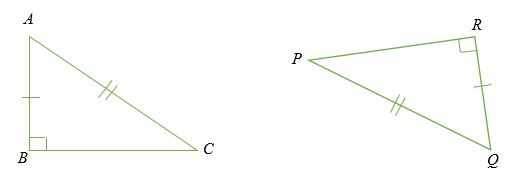
Proof of Hypotenuse Leg Theorem
In the diagram above, triangles ABC and PQR are right triangles with AB = RQ, AC = PQ.
By Pythagorean Theorem,
AC2 = AB2 + BC2 and PQ2 = RQ2 + RP2
Since AC = PQ, substitute to get;
AB2 + BC2 = RQ2 + RP2
But, AB = RQ,
By substitution;
RQ2 + BC2 = RQ2 + RP2
Collect like terms to get;
BC2 =RP2
Hence, △ABC ≅△ PQR
Example 1
If PR ⊥ QS, prove that PQR and PRS are congruent
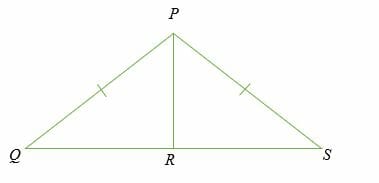
Solution
Triangle PQR and PRS are right triangles because they both have a 90-degree angle at point R.
Given;
- PQ = PS (Hypotenuse)
- PR = PR (Common side)
- Therefore, by Hypotenuse – Leg (HL) theorem, △ PQR ≅△ PR.
Example 2
If FB = DB, BA = BC, FB ⊥ AE and DB ⊥ CE, show that AE = CE.
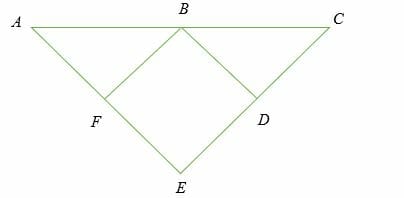
Solution
By Hypotenuse Leg rule,
- BA = BC (hypotenuse)
- FB = DB (equal side)
- Since, ∆ AFB≅ ∆ BDC, then ∠A = ∠ Therefore, AE = CE
Hence proved.
Example 3
Given that ∆ABC is an isosceles triangle and ∠ BAM = ∠MAD. Prove that M is the midpoint of BD.
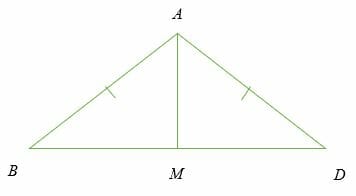
Solution
Given ∠ BAM = ∠MAD, then line AM is the bisector of ∠ BAD.
- AB = AD (hypotenuse)
- AM = AM (common leg)
- ∠ AMB = ∠AMD (right angle)
- Therefore, BM = MD.
Example 4
Check whether ∆XYZ and ∆STR are congruent.
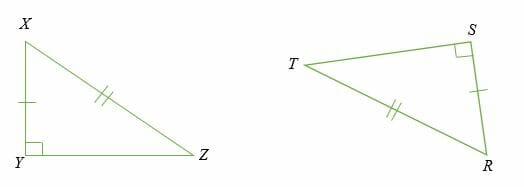
Solution
- Both ∆XYZ and ∆STR are right triangles (presence of a 90 – degree angle)
- XZ = TR (equal hypotenuse).
- XY = SR (Equal leg)
- Hence, by Hypotenuse-Leg (HL) theorem, ∆XYZ ≅∆STR.
Example 5
Given: ∠A=∠C = 90 degrees, AD= BC. Show that △ABD ≅ △DBC.
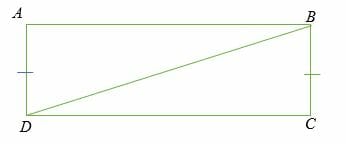
Solution
Given,
- AD = BC (equal leg)
- ∠A=∠C (right angle)
- BD = DB (common side, hypotenuse)
- By, by Hypotenuse-Leg (HL) theorem, △ABD ≅ △DBC
Example 6
Suppose ∠W = ∠ Z = 90 degrees and M is the midpoint of WZ and XY. Show that the two triangles WMX and YMZ are congruent.
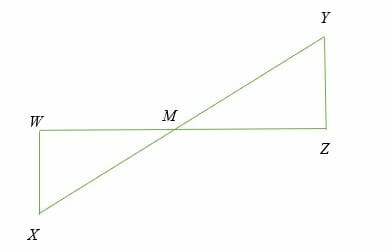
Solution
- △WMX and △YMZ are right triangles because they both have an angle of 900 (right angles)
- WM = MZ (leg)
- XM = MY (Hypotenuse)
- Therefore, by Hypotenuse-Leg (HL) theorem, △WMX ≅ △YMZ.
Example 7
Calculate the value of x in the following congruent triangles.
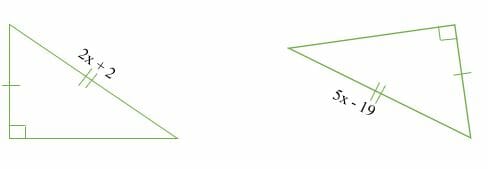
Solution
Given the two triangles are congruent, then;
⇒2x + 2 = 5x – 19
⇒2x – 5x = -19 – 2
⇒ -3x = – 21
x =- 21/-3
x = 7.
Therefore, the value of x = 7
Proof:
⇒ 2x + 2 = 2(7) + 2
⇒14 + 2 = 16
⇒ 5x -19 = 5(7) – 19
⇒ 35 – 19 = 16
Yes, it worked!
Example 8
If ∠ A = ∠ C = 90 degrees and AD = BC. Find the value of x and y that will make the two triangles ABD and DBC congruent.
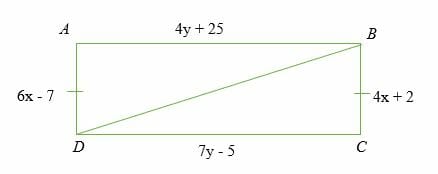
Solution
Given,
△ABD ≅ △DBC
Calculate the value of x
⇒ 6x – 7 = 4x + 2
⇒ 6x – 4x = 2 + 7
⇒ 2x = 9
⇒ x = 9/2
x = 4.5
Calculate the value of y.
⇒ 4y + 25 = 7y – 5
⇒ 4y – 7y = – 5 – 25
⇒ -3y = -30
y = -30/-3 =10
Therefore, △ABD ≅ △DBC, when x = 4.5 and y = 2.72.
